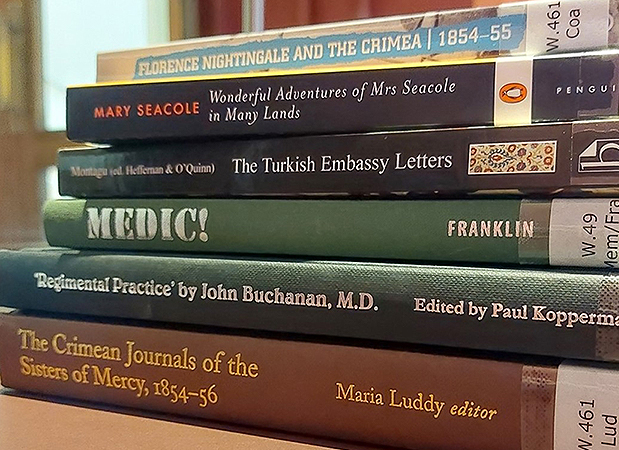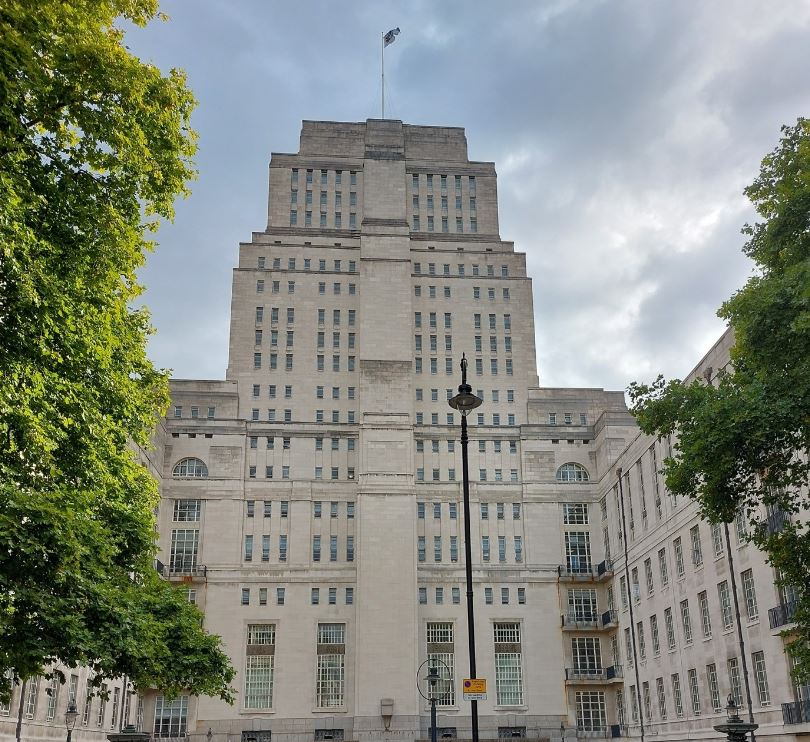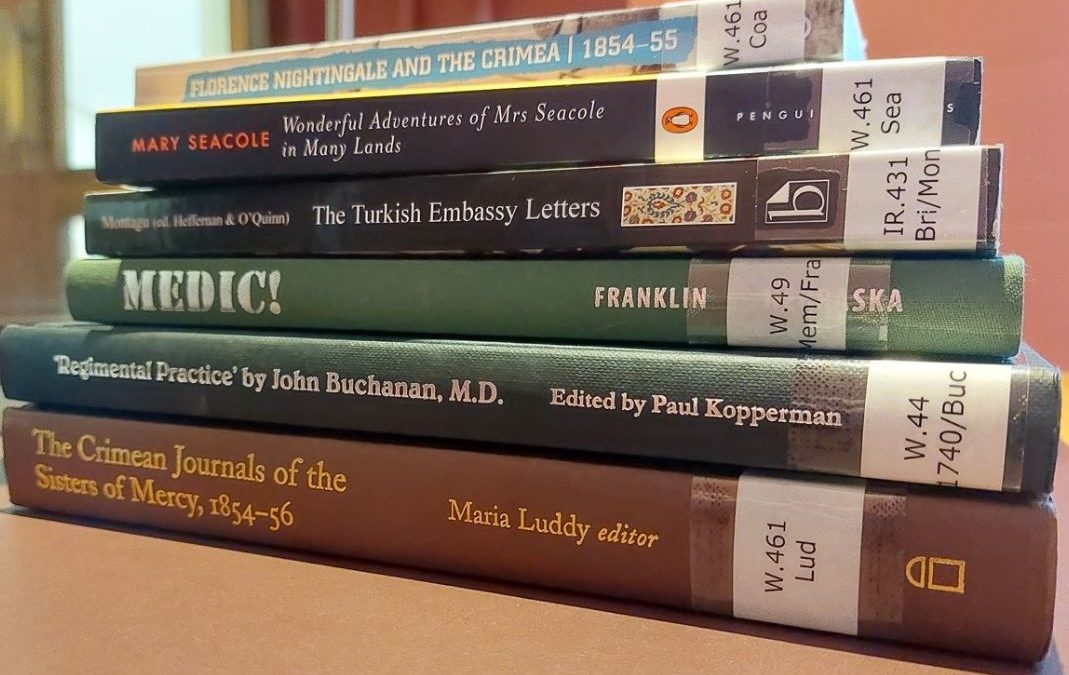This blog post was written by Sophie Swann, history undergraduate student at the University of Leicester. Sophie completed a placement at the IHR in August 2022, working on the Bibliography of British and Irish History and in the IHR library. She explored History of Medicine collections in the IHR library as part of our contribution for History Day 2022.
The free annual History Day will be held online on 17 November with the theme ‘Human Discovery: Experiencing Science’. Participating organisations will share their collections on this theme, including the everyday experiences and impacts of science and technology. Find out more and sign up at history.ac.uk/events/history-day22. In this post, which is cross-posted from the History Day ‘History Collections‘ blog, Sophie shares some sources illustrating medical history in the IHR collections.
Working at the IHR has been a privilege, not only in getting to work with the extensive and wonderful collection of primary sources but also meeting and working with the dedicated and passionate team. Browsing through the shelves of the IHR library, you can never really be sure what will come up next; from the journals of Catholic nuns working as nurses in the Crimean War, to the letters of Lady Montagu in Turkey, writing to tell her friend of the wonders of inoculation against smallpox. From a doctor’s notes on how best to cure the Itch (scabies) in soldiers (mercury not always being necessary) to Vietnam War nurses celebrating their new-found freedom to practice medicine as only doctors had been allowed previously. And that was just in the basement. Histories, journals, periodicals, newspapers, biographies, diaries, encyclopaedias, letters, records, and many other primary sources are all waiting to be explored and used.

I was asked to do some research into the history of medicine and science for the upcoming History Day event hosted by the IHR and Senate House Library. After a grand tour of the stacks, I chose to research some sources on military medicine, even though it was not on the initial list of topics. I was hoping to find some ideas on different advances that military medicine had made to common practice. However, I soon found the stories, diaries, and letters of medics themselves to be far more compelling. Although various accounts of wounds sustained and survived by soldiers did also make for some fascinating reads, it was the stories of incredible bravery in the face of overwhelming suffering that truly hooked me: stories of doctors, nurses, volunteers, and poorly-trained medics who sacrificed their own wellbeing and safety to save lives.
However, some of the more interesting prescriptions also piqued my interest, and I subsequently went on to research those. I investigated the gradual popularisation of smallpox inoculation in Britain and the US. Lady Mary Montagu, who lost a brother and had herself barely survived smallpox, found in Turkey the practice of insertion or inoculation, in the early eighteenth century. On her return to England, she demonstrated on her daughter the safety of the practice. It involved making a small cut on any part of a person’s body and smearing a small amount of pus from an infected person’s pustule. The practice was initially treated with some scepticism. However, later in the century a doctor named Edward Jenner found that milkmaids who milked cows with cowpox seemed less susceptible to smallpox. He concluded there was a connection between the two diseases and that inoculation using cowpox pus was safer for the patients and would still render them immune to smallpox. Thus, the vaccination was born – from the Latin word ‘vacca’ for cow. Newspaper reports of these findings are numerous and fascinating, as the change from total disgust and disapprobation for the practice slowly changed to the hope that smallpox might one day be eradicated completely.
These sources are what make working in the IHR so great: they bring people, places and circumstances to life, by giving their witnesses a voice.

All this is curated, sourced, and kept by the wonderful team. From the very beginning everyone was really friendly and happy to help me and answer any questions I came up with. On my first day I was given the grand tour, including not only the public stacks but the onsite store at the top of the building. The huge number of sources was a little overwhelming at first, but once I learned my way around the shelves, I came to appreciate the IHR’s unique cataloguing system. It made it easy to find specific works I had researched, as well as allowing me to browse by category just by looking at nearby shelves. I had great support throughout the internship, both for my research and in going to one-on-one meetings, which really helped me get to know people and made me feel at home. I also had some online meetings with the editors of various IHR resources, including British History Online, Historical Research journal, and Reviews in History. I also met with the directors of the Centre for the History of People, Place, and Community and History and Policy. From these meetings I learnt a lot about different careers within history, and about the wider community of work in history, that goes beyond the academic. Working at the IHR was a hugely rewarding experience, as the research I have done will hopefully be of real use, and it opened my eyes to the options available in the world of history.

